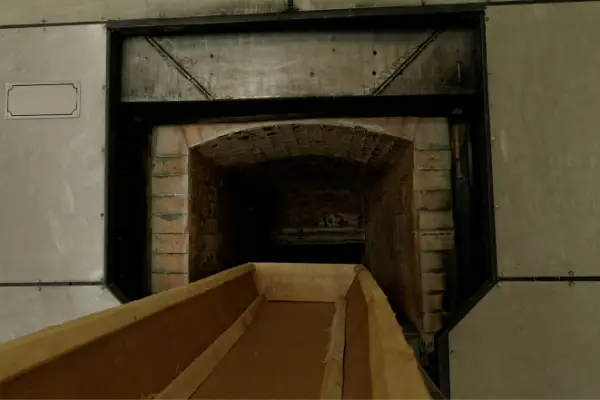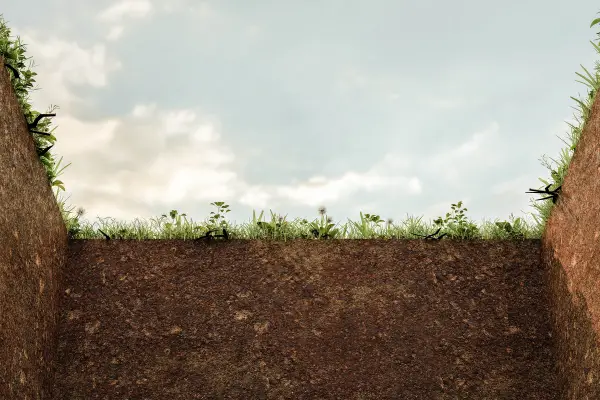When you lose a loved one, you want to be sure that they have the best possible send-off you can give them. You may be worried that after all your careful planning your departed relative or friend is then dumped in a communal cremator and mixed in with Mr. & Mrs. Who are you?
Human cremations, by law, are always carried out individually. Besides the fact that modern cinerators only have the capacity for one body, there are legal and ethical reasons not to carry out communal cremations. This means the returned remains are always from one person, though mishaps can happen.
Generally, you should be confident in the systems which have been put in place as they help give your departed loved one a dignified and individual service. However, if you would like to know a bit more about the process, I invite you to read on for more peace of mind.
How is a person cremated exactly?

Despite what Hollywood might have us believe, cremations almost never immediately follow a funeral. We often see the casket in a crematorium recede behind some small curtains or sink into a hidden compartment, depending on the venue. What happens next really depends on the capacity and schedule of the crematorium.
Most bodies are cremated in a casket, however, this isn’t the law and you by means need to buy a $2000+ casket just to burn it later. Look at my article about the cost-saving benefits of renting a casket here (it’s much more common than you think and everyone should do it) or look at ways to cut the cost of caskets in half, here.
Before cremating the body, the casket will be checked as will the identity of the deceased. The crematorium technician will also normally place a stainless steel plaque or another non-combustible marker within the coffin. This will help ensure that the right cremains are given to the correct family.
The casket is then placed in the cremation chamber and is exposed to extremely high temperatures, of roughly 1800 °F. The soft tissue and other combustible material such as the coffin are incinerated and escape the chamber as gas. This can take up to a couple of hours depending on the size of the body.
At this point, any metallic material, from fillings or surgeries, are removed by a magnet and other filtering processes. This leaves the bones, which cannot be fully consumed by the heat, which are then pulverized by another special machine.
After the cremation has happened, the remains will be correlated with the schedule and any identifying plaque to ensure the right person is placed into the appropriate urn for collection. (check out the affordable selection on OneWorld Memorials).
What Are Cremains & Do Your Really Get The Right Ones?
Cremains are one of the official terms for what we generally call ‘ashes’. It comes from the two terms ‘cremated’ and ‘remains’. They are, in fact, not ash at all.
What families are presented with at the end of the cremation process and may later scatter in an important place are mainly made from calcium phosphate. This is because ‘ashes’ are really just cremated bone which was reduced to very small particles by a special machine in the crematorium. There is absolutely no tissue or material from the casket in cremains.
You can also be fairly sure that you have been given the right cremains by the crematorium as only one body is cremated at once, and they do a very good job to track who is who. However, mistakes can happen and it’s very unlikely that you would ever know the difference.
When a body is cremated what happens to the coffin?
When someone is cremated, the coffin or casket is normally incinerated with them. During the initial phases of the cremation process, the coffin will be burned and disappear into the atmosphere as carbon dioxide and other gases.
The funeral home and/or crematorium are not in the habit of stealing or reusing a casket which has been purchased by a client. However, you certainly do not have to cremate your loved one in a casket and you can actually save yourself a lot of money by avoiding this wasteful practice.
More and more people are realizing that it’s perfectly fine to rent a casket in order to conduct a funeral and then later opt for a simpler casket or even a simple shroud in order to cremate the body. Although this may sound disrespectful, it’s perhaps a better legacy for your loved one and will help reduce their carbon footprint too.
Find out more about doing this here.
Can cremated remains be buried with another person?

There are many options when it comes to disposing of created remains from scattering them on a beach or at sea to burying them in your own backyard. But is burying them in a graveyard in an established grave really an option?
Many cemeteries do allow cremated remains to be interred on top of an existing grave. However, almost all of them will require prior permission and additional fees asked for if this wasn’t already agreed in a lease. Where this isn’t permitted, a separate cremation burial area is usually provided.
If you are planning to do this, make sure you check with the cemetery in question before you buy a plot or start digging a hole.
Another great option is to get the ashes made into a permanent piece of jewelry, you should check out the beautiful handcrafted pieces Mark Hamilton makes with cremains by visiting his site here.
How many bodies are allowed in one grave?
Burial space in the USA isn’t such an issue as in other countries, but in some bigger cities, there is a growing demand for a final resting space.
Most modern burials will have a maximum of just two casket burials per grave. Urn burials may add to this number. Also, family plots may concentrate several more burials within a small area. Historic graveyards may have as many as 8 burials per grave and even more.
When referring to a virgin grave, the real maximum amount of burials will be just two. Normally this consists of a married couple who bought a companion plot with a ‘double depth’ configuration where one casket is buried on another.
Families can also buy up a plot of land where many individual graves are dug or a mausoleum with the capacity for multiple burials, both caskets, and urns. However, these again are normally individual spaces and not intended for multiple burials.
In some older cemeteries in the US and around the world, some grave plots are repurposed over time and new burials placed on top of older ones. The same can be said for ‘pauper’ graves where several individuals may be buried in the same plot over time by the state.
Are pets cremated individually?
As pets come in all shapes and sizes and aren’t treated in quite the same way by law, their cremations can be different from their human masters.
Pets can be cremated communally or individually, with the former being considerably cheaper than the latter service. When a pet gets its own cremation, the cremains are normally returned. For communal cremation, owners may not wish to retrieve the remains as they will not be from just one animal.
If you would like to find out more about cremation for pets, please check out the following articles:
- What Is Water Cremation For Pets And Is It Right For You?
- Can You Cremate Hamsters And Other Species Of Rodent?
- Can You Cremate Turtles And Other Species Of Reptiles?
- How To Cremate A Pet At Home And Do It Right
Is it safe to touch cremated remains?
Yes, in almost all cases it is safe to touch cremated remains, but for more information, you can read my full article about this question here.




